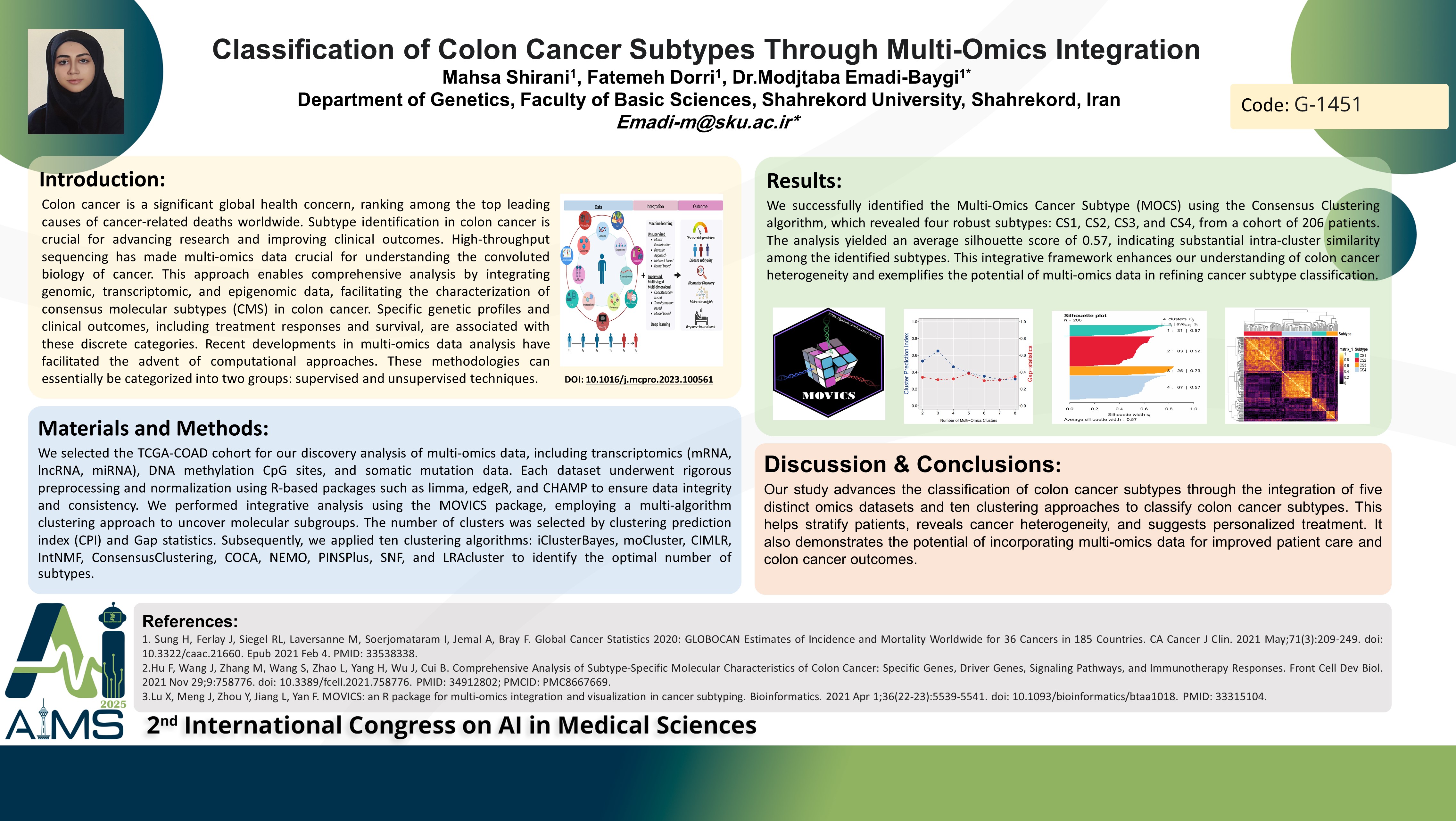طبقه بندی زیرنوع های سرطان کلون از طریق تلفیق مولتی اومیکس
کد: G-1451
نویسندگان: Mahsa Shirani ℗, Fatemeh Dorri, Dr.Modjtaba Emadi-Baygi *
زمان بندی: زمان بندی نشده!
برچسب: تشخیص و درمان سرطان
دانلود: دانلود پوستر
خلاصه مقاله:
خلاصه مقاله
Background and aims: Colon cancer is a significant global health concern, ranking among the top leading causes of cancer-related deaths worldwide. Subtype identification in colon cancer is crucial for advancing research and improving clinical outcomes. High-throughput sequencing has made multi-omics data crucial for understanding the convoluted biology of cancer. This approach enables comprehensive analysis by integrating genomic, transcriptomic, and epigenomic data, facilitating the characterization of consensus molecular subtypes (CMS) in colon cancer. Specific genetic profiles and clinical outcomes, including treatment responses and survival, are associated with these discrete categories. Recent developments in multi-omics data analysis have facilitated the advent of computational approaches. These methodologies can essentially be categorized into two groups: supervised and unsupervised techniques. Methods: We selected the TCGA-COAD cohort for our discovery analysis of multi-omics data, including transcriptomics (mRNA, lncRNA, miRNA), DNA methylation CpG sites, and somatic mutation data. Each dataset underwent rigorous preprocessing and normalization using R-based packages such as limma, edgeR, and CHAMP to ensure data integrity and consistency. We performed integrative analysis using the MOVICS package, employing a multi-algorithm clustering approach to uncover molecular subgroups. The number of clusters was selected by clustering prediction index (CPI) and Gap statistics. Subsequently, we applied ten clustering algorithms: iClusterBayes, moCluster, CIMLR, IntNMF, ConsensusClustering, COCA, NEMO, PINSPlus, SNF, and LRAcluster to identify the optimal number of subtypes. Result: We successfully identified the Multi-Omics Cancer Subtype (MOCS) using the Consensus Clustering algorithm, which revealed four robust subtypes: CS1, CS2, CS3, and CS4, from a cohort of 206 patients. The analysis yielded an average silhouette score of 0.57, indicating substantial intra-cluster similarity among the identified subtypes. This integrative framework enhances our understanding of colon cancer heterogeneity and exemplifies the potential of multi-omics data in refining cancer subtype classification. Conclusion: Our study advances the classification of colon cancer subtypes through the integration of five distinct omics datasets and ten clustering approaches to classify colon cancer subtypes. This helps stratify patients, reveals cancer heterogeneity, and suggests personalized treatment. It also demonstrates the potential of incorporating multi-omics data for improved patient care and colon cancer outcomes.
کلمات کلیدی
Colon Cancer, Multi-Omics, Consensus Molecular Subtypes
